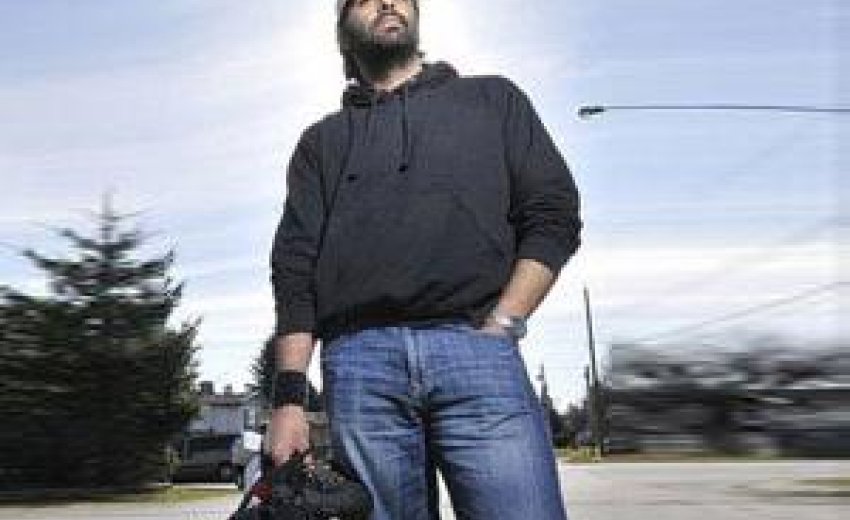
A documentary that has aimed to go into the crevasses of gang fare has caused concern amongst the Sikh community in Canada.
Dan Ferguson from the Surry Leader has an in-depth account of this documentary, he writes:
The interview is one of several inside looks at the gang lifestyle seen in "A Warrior's Religion," a documentary that took 26-year-old Amar three years to research and shoot.
They spent many hours together, the paralyzed man with the sunglasses and knit cap leaning his neck against the padded headrest of his wheelchair while the younger man with the frayed baseball cap and video camera asked questions.

"Have you killed people?"
"Yes." A soft, exhausted whisper.
"And you're okay with that?"
"No, I'm not okay, now. But I was."
It took local filmmaker Mani Amar four months to locate notorious former gangster Bal Buttar and convince him, over many daily visits, to speak on camera.
The interview is one of several inside looks at the gang lifestyle seen in "A Warrior's Religion," a documentary that took 26-year-old Amar three years to research and shoot.
During the 1990s Buttar was one of the scariest men in Metro Vancouver – a self-described hit man, a hulking giant who intimidated the toughest of the tough.
He was left blind and unable to move from the neck down in 2001 after he was shot twice in the head.
In the documentary, Buttar says he remembers a sound like a "wrestling bell" then waking up in darkness.
His partners in crime met similar fates.
"My whole crew vanished. In two years my whole crew (was) gone," he says.
During Amar's visits, Buttar would sometimes weep with frustration at his physical limitations.
Other times he would still try to play tough guy, even threatening the filmmaker when his volatile mood shifted.
Amar, a former bare-knuckle brawler from a Port Alberni high school, would bark back, reminding Buttar that he couldn't even feed himself.
"Sorry to say it, but it's a pretty sad life," he tells Buttar in one exchange.
"Yes it is," Buttar replies.
While Buttar says in the film that he wants to warn young people away from gang life, Amar believes it still has an attraction for his interview subject.
"He misses the power."
Buttar's mother once told a police officer that her three sons were "warriors." This was before one was murdered and one crippled as a result of their underworld involvement.
Amar says he decided to use "A Warrior's Religion" for his title because many South Asian gangsters view themselves as warriors.
A few people have objected to the title, viewing it as an insult to the Sikh community. There have been threatening phone calls and "ignorant" e-mails and letters, he says.
“They can't get past the title.
"I never once thought this issue was specific to one community."
Amar distilled dozens of interviews and more than 50 hours of videotape into a 100-minute film that features conversations with people on every side of the issue.
The film shows Surrey resident Eileen Mohan making her daily visit to the grave of her son Chris, who was the innocent victim of a gang-style mass execution in October 2007 at a Whalley high-rise.
Amar captures Mohan holding a T-shirt that her son used to wear.
"This is what is left", she says. "Just a shirt to hug."
Amar goes on a ride-along with two current gang members who cheerfully show him their weapons.
One, a 21-year-old who still lives with his parents, owns a military-grade sniper rifle with bullets worth $19 each.
"What is the point?" Amar asks.
"There is no point," the young man responds.
"A Warrior’s Religion" will have its public premiere on March 18 at the Bell Performing Arts Centre in Surrey at with the first of four showings at 5:15 p.m.
For tickets and more information, go to www.warriorsreligion.com/links/tickets

